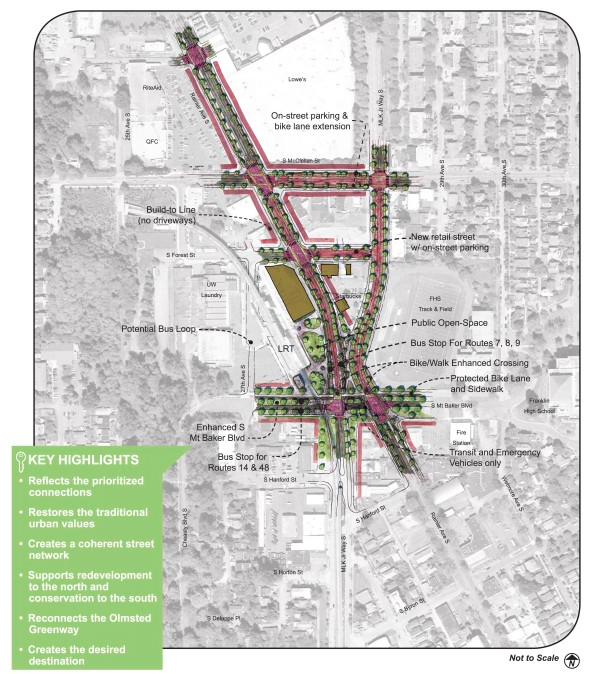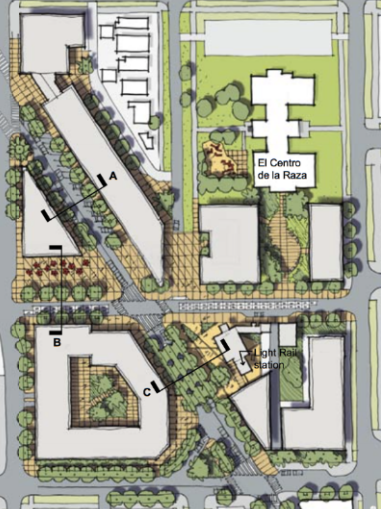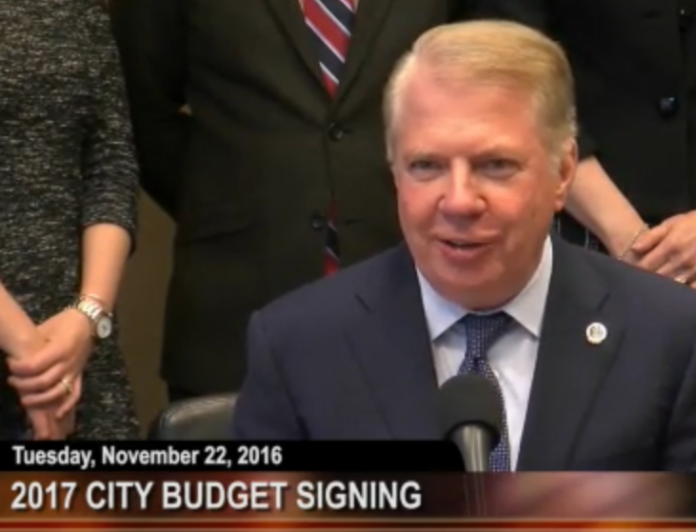Last Monday the Seattle City Council approved its budget for the next two years, 2017-2018. This year’s budget season received added scrutiny due to some highly visible proposals that were proposed by the councilmembers, some of which made it into the final passed budget. Here are some of the items around the area of transportation that made it through the budget process, that you may have missed while gearing up for your Thanksgiving holiday.
With the Move Seattle levy nearing the end of its first year in effect, the final budget moved forward funding for a number of proposed items that were originally spread out more evenly over the life of the nine-year levy. The most notable part of this is the acceleration of a fix for one of Seattle’s deadliest intersections where Rainier Ave and MLK Way intersect in Mount Baker. This Accessible Mount Baker project would redistribute access to the immediate area around one of South Seattle’s light rail stations, currently a pretty car-centric area.

Additionally, funding for the Pedestrian and Bicycle Master Plan implementation has also been accelerated. $5 million in Move Seattle funds will be moved ahead in order to fund projects that are already identified but need funding. These projects, particularly in the bike master plan, should help to “bridge the gaps” in our current network and create real bike and pedestrian corridors to accommodate the explosion in the number of people using those modes.
At this point, it is unclear what additional funding will do for those plans. The biggest factor in the implementation of the largest plans from the bike master plan, for example, does not appear to be lack of funds but rather political will. Bike lanes Downtown are still on hold while the One Center City plan continues its work, with a possibility of a Center City Bike Network coming out of that group sometime before it concludes its process. We will watch closely the change in plans for the rest of the city.
Related to the subject of the bike master plan: the Council also voted to cut dramatically the amount of money going to operate Seattle’s current bike share system, Pronto. They also set a deadline for the money to be used, March 31, 2017. This means Pronto has a concrete sunset time and Seattle has a guaranteed period where it will be without a bike share system at all.
This past spring, when the Council voted to purchase Pronto assets, the assumption was that the money to keep operating Pronto would allow a seamless transition to the new bike share system, which the Seattle Department of Transportation (SDOT) hopes to launch next summer but which still needs to go through the City Council. Suffice it to say, forcing a termination in service of any kind is just the kind of thing to further endanger the bike share constituency that we wrote about previously and is pretty disappointing. But Pronto has clearly become an albatross around both the Council and SDOT’s neck, and so the Council decided to quietly shut down the system and allocate the money elsewhere.
Other important budget items included:
- Funding for a study around Beacon Hill’s main retail district: the creation of the North Beacon Hill Town Center Transportation Plan sets up the neighborhood to quickly implement projects when funding becomes available, and to leverage private funds with the development of properties in the town center boundary more quickly. The funds will go toward traffic studies and street concepts for the area that ultimately should end up in Seattle’s right-of-way improvement manual for future implementation.

- $1 million to fund the expansion of the Rainer Avenue road diet. This project has been immensely successful but lacked express funding to expand beyond the section already completed in Columbia City.
- The allocation of additional funds ($400,000) from red-light cameras to the Safe Routes to School fund, with a focus on improving access to lower income schools citywide.
- The hiring of a grant writer by SDOT to better be able to leverage the existing funds from Move Seattle with other funding sources including state and federal grants.
- Money for a study on the current condition of Seattle’s existing sidewalk network. We have a good idea where we don’t have any sidewalks, but there is not any data known currently about the physical condition of the existing sidewalk network. This a big outstanding question with regard to the pedestrian master plan, which is already dramatically underfunded only in terms of adding sidewalks, not even repairing them.
- A study on the interaction of streetcars and bicycles. The Center City Connector streetcar will be moving forward in the next two years, and ensuring the safe interaction between people on bikes and streetcar tracks has become a pressing issue.
If you want to know where a city’s priorities are, look to its budget. The passed 2017-2018 budget is definitely a positive sign that both the Mayor’s office and the City Council are willing to make the investments toward a city that prioritizes the mobility of all of its citizens.
Ryan Packer has been writing for The Urbanist since 2015, and currently reports full-time as Contributing Editor. Their beats are transportation, land use, public space, traffic safety, and obscure community meetings. Packer has also reported for other regional outlets including BikePortland, Seattle Met, and PubliCola. They live in the Capitol Hill neighborhood of Seattle.


